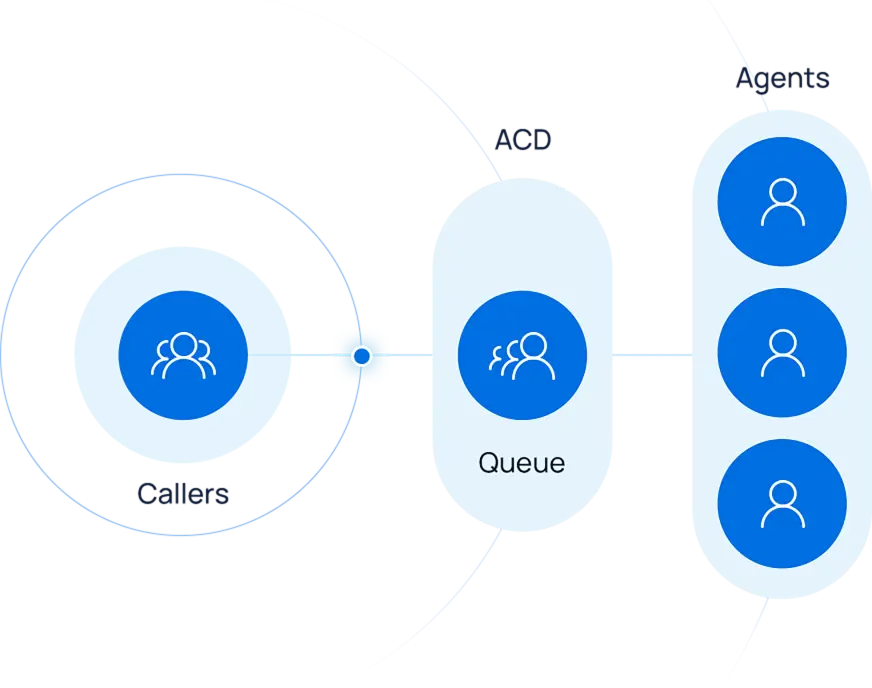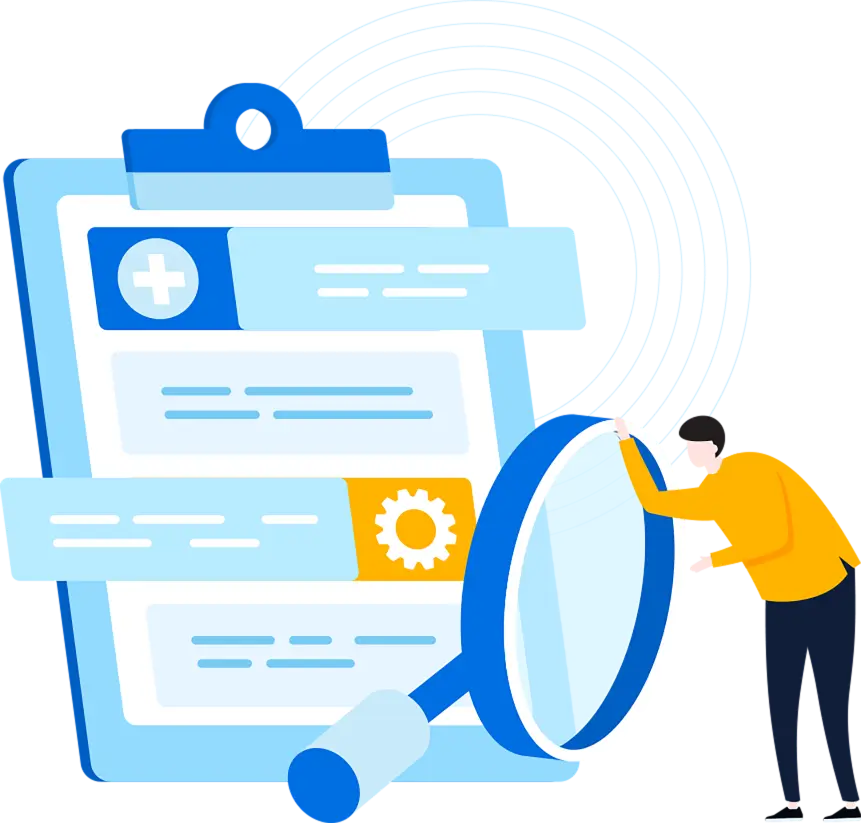Call routing is critical in improving call center operations and customer experience. If your business’s call volume increases, having an efficient call routing software can effectively reduce call wait time and prevent multiple transfers before your customer reaches the right individual or department. In this page, we’ll dive into how call routing systems work, different types of routing methods, benefits, and best practices for effective routing strategies.

What Is Call Routing?
Call routing is a business phone system feature that manages incoming calls by queuing and directing them to the right destination. It involves determining where a call should be sent based on a pre-defined set of rules and criteria, which might include the time of day (or time zones), language preferences of the caller, agent availability, caller requests, etc.
As the call routing process is fully automated, the feature is sometimes referred to as Automatic Call Distribution (ACD).
Call routing functionality doesn’t only apply to high-volume scenarios like contact centers. Companies of all sizes can use the feature to make sure customers can easily reach the right person or department whenever they call.
How Does Call Routing Work?
Different business phone systems or call centers may route calls differently. In most cases, when a person calls a business, the automated call routing accepts the call, provides an Interactive Voice Response (IVR) menu, and then connects callers with the most appropriate resources, whether it be a specific individual, a queue, a voicemail box, etc. Factors used to determine how calls are handled include:
Time of Day: Whether it’s during business hours or holidays.
Caller ID: The phone number of the incoming call, which also provides info on the caller’s location and sometimes, the call priority.
Called Number: The number that the customer called. For example, the sales hotline and support hotline.
IVR Menu Selections: Input from the caller in an IVR menu of choices.
Call Waiting Time: The caller’s current wait time in a call center queue.
Agent Skill: Connect the callers to the best-suited agents to handle their queries using skill-based routing.
Agent Status & Presence: The real-time availability & presence status of the called person or agent, such as busy, on holiday, etc.

Types of Call Routing Methods and Strategies
Effective call routing strategies often employ a combined set of criteria to direct calls to agents consistently. These call routing rules help small businesses to large enterprise provide a better customer experience. The most common strategies include:

The Benefits of Call Routing

Frequently Asked Questions
The difference between call routing and call forwarding?
The call forwarding feature forwards inbound calls to the device or number that the callee is currently using. For instance, if your employee can't answer their desk phone, the call can be forwarded to their cell phone.
Call routing queues and routes calls to the team of agents based on the specific rules. It is a tool that call centers usually employ to handle a high number of incoming calls.
Why is automated call routing important?
83% of customers expect to engage with someone immediately when contacting a company. (Source: Salesforce)
Consumers rank speed to issue resolution as top priority and knowledgeable service teams as #3. (Source: Northridge Group)
Nearly two-thirds (58%) of consumers will sever a relationship with a business due to poor customer service. (Source: Microsoft)
In short, gets customers to the right agents on their first attempts which leads to a better customer experience.
How to establish an effective call routing strategy?
Although choosing the right strategy for routing calls will vary from one business to another, there are some good practices you should follow when establishing how you manage incoming calls.
Understand your customer needs and call volume
Offer your callers an automated callback feature
Pre-record IVR prompts to present options
Create data reports that run periodically
Figure out your average resolution efficiency
Besides the above, you can also implement additional call management features, such as call recording, call monitoring, and call analytics, to help your agent handle customer calls more efficiently.
How to avoid common call routing mistakes?
Streamline your menu options
If you give customers seemingly endless IVR menu options, they are likely to press the button to go directly to human customer service and speak with a less-specialized agent.
Ensure your queues are sufficient
Customers will get annoyed when they are told to "please continue holding" after a long wait. Observe your call volume trends and allocate more staff or take special measures to respond at times with high predicted call volumes. For example, enable the queue callback feature to free customers from waiting forever yet help them get connected as soon as an agent is available.
Update Your System Regularly
A call management and routing system that works must continue to grow to suit customer needs. Call center supervisors usually use analytics and reports to spot potential problems and adjust accordingly before they hurt the bottom line.
Easy-first Business Phone System
Available in the Appliance, Software, and Cloud Edition, Yeastar Phone System provides
flexible deployment options,
allowing you to have your PBX system sited on-premises or in the
cloud.
Appliance Edition
If you prefer a plug-and-play system deployed within your company to ensure complete control, the Appliance Edition is the perfect fit.
See SpecificationsCloud Edition
Want to eliminate the workload of hardware installation while having your phone system up & running immediately? This is the option for you.
Learn MoreSoftware Edition
You make the call whether to install the PBX system on a hardware server, a virtual machine, or even in the cloud.
Learn More